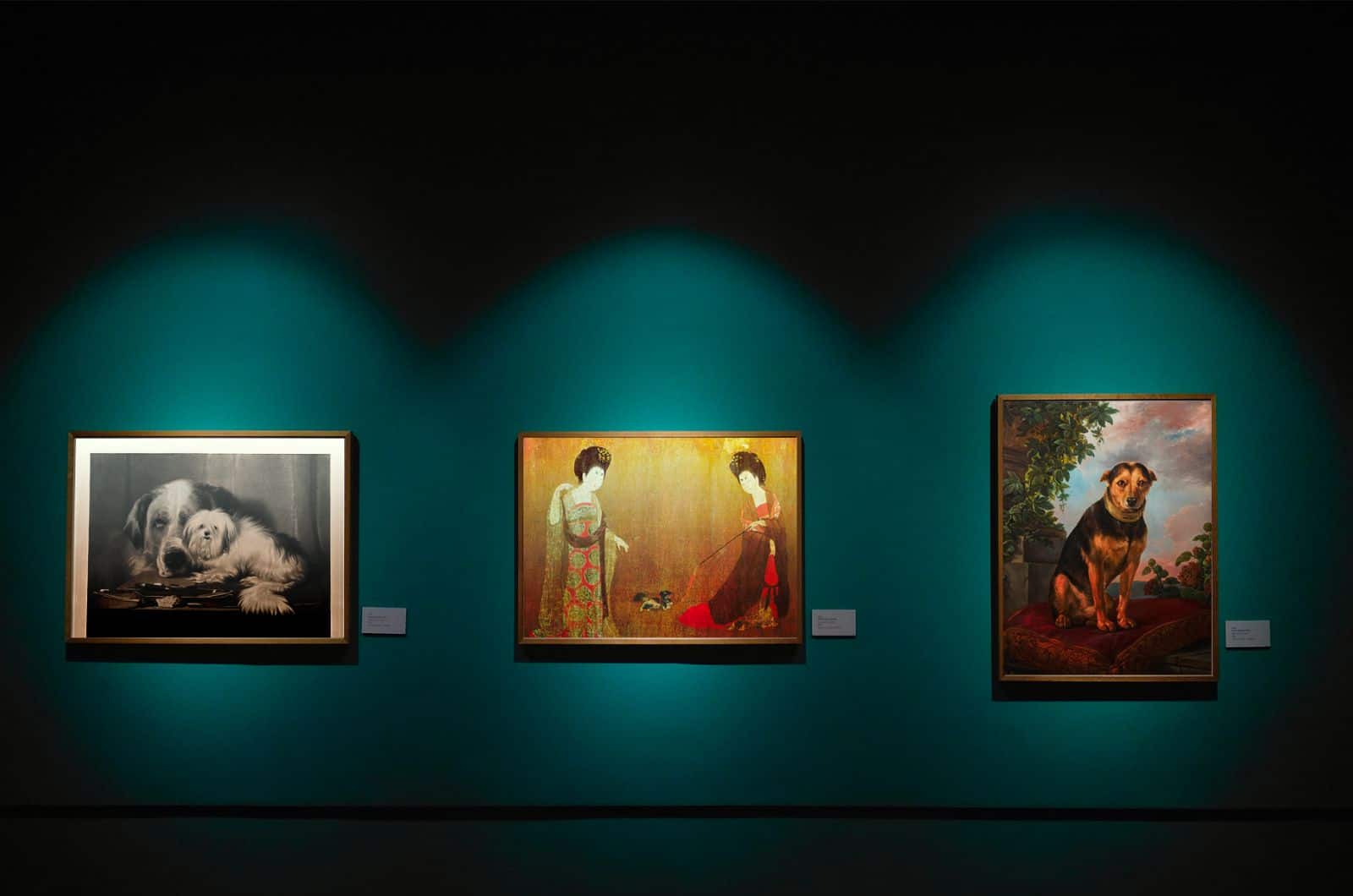Canines served as a metaphor for social issues, inspiration for different lifestyles, or as the purest form of artistic expression, only to become a mainstay in human lives. Dogs were, and clearly are, muses for humankind, so why not revisit some of the most world-renowned interpretations of dogs?
1. Rock Art From A Cave In Saudi Arabia
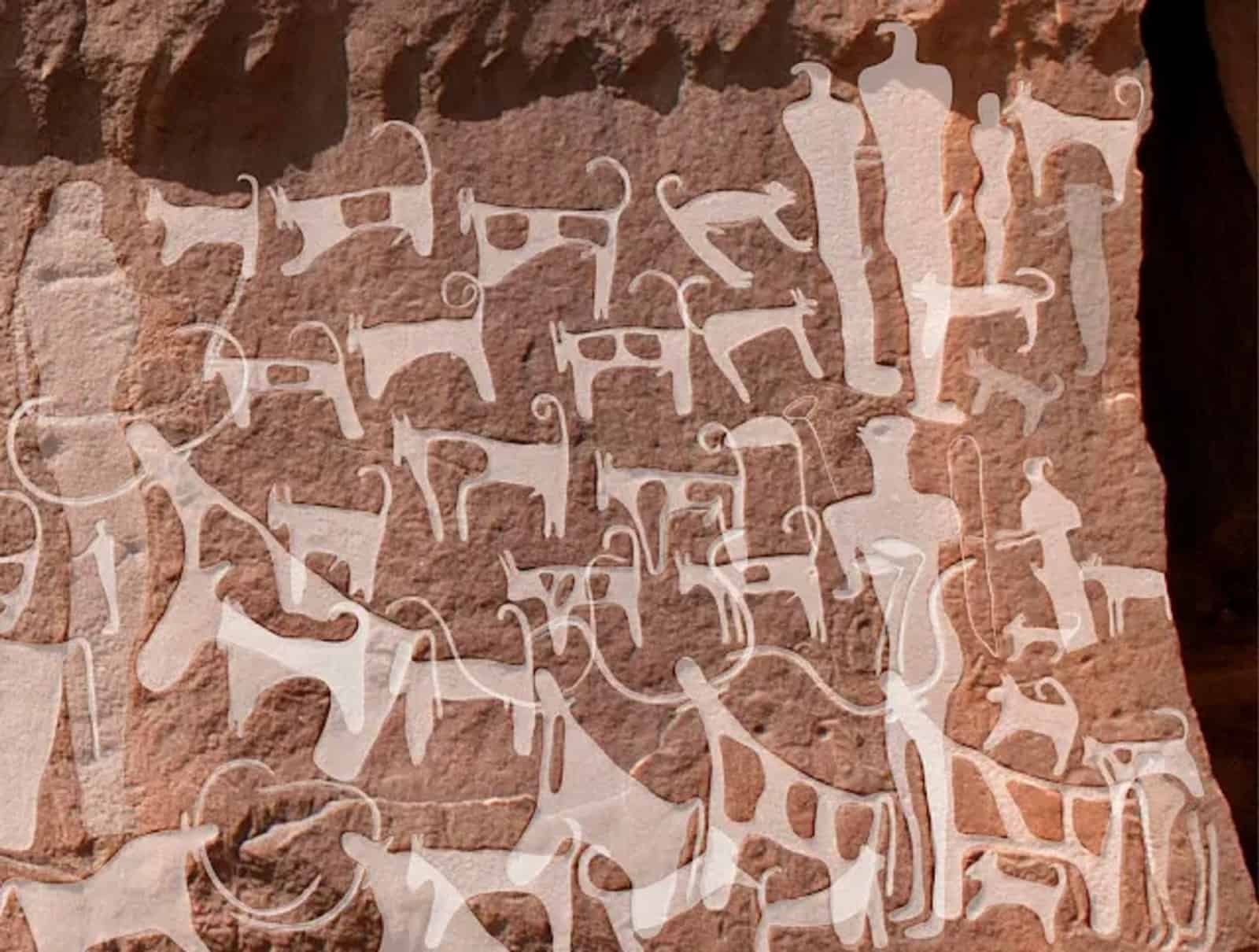
Rock art from a cave located in Saudi Arabia from, obviously, unknown authors portrays what is believed to be a pack of dogs around some human hunters. Whatever the story behind this cave art is, I trust the humans depicted in it were overwhelmed with joy, being surrounded by dogs.
There is not much information to go on, but there are clues that indicate a clear distinction between shepherding and hunting dogs on this piece of art. I cannot make out which one is which, but I trust you will have better results with a cup of morning coffee.
2. Chou Fang’s Ladies With Hair Adorned With Flowers
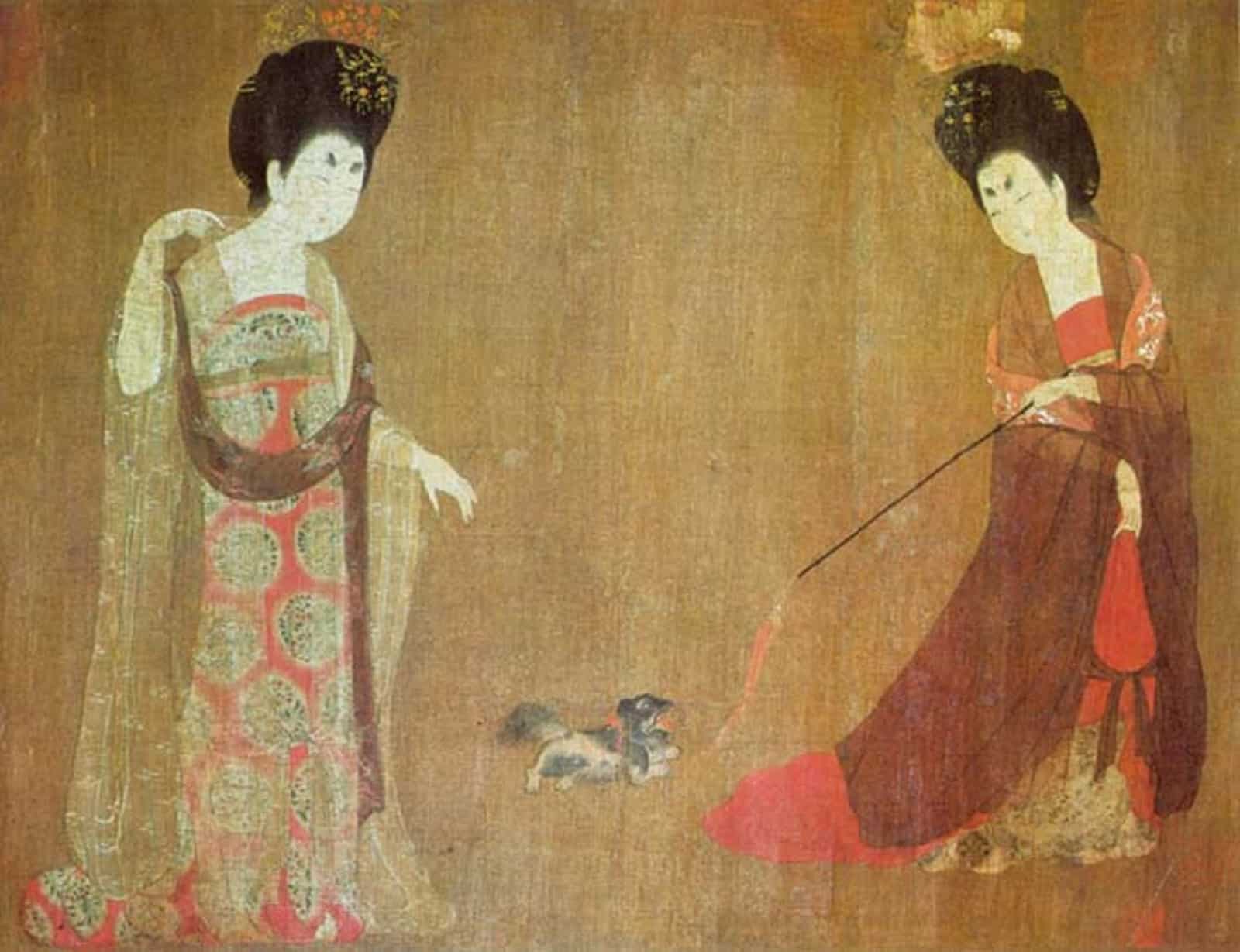
This odd-looking canine seems to be living the life during the Tang Dynasty. This painting originates from Fang’s hometown, Chang’an (Xi’an) and was created between 730 and 810.
Some of the world’s most sought after small dog breeds are from China, so it is not surprising that the painting features what I believe to be a Pekingese.
The squirrel-like appearance might have been Chou Fang’s slight dig at the breed or a true-to-life depiction of the breed’s appearance back in the day.
3. Edwin Landseer’s A Distinguished Member Of The Humane Society
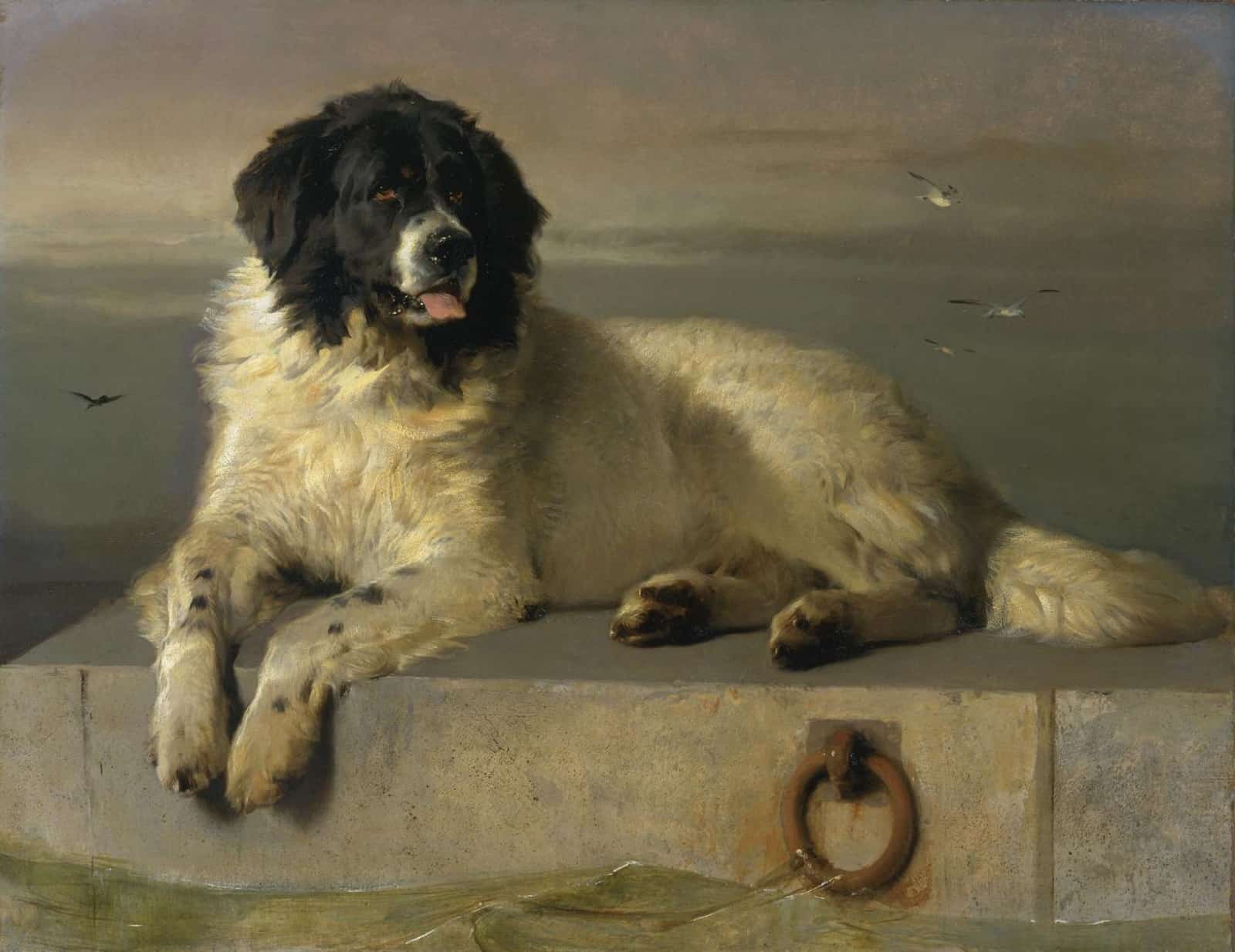
Fast-forward to the 19th century painter, Sir Edwin Henry Landseer, and you get this immaculate painting of a black-and-white Newfoundland dog. This oil on canvas painting is part of the Tate Museum collection, but was bequeathed by Newman Smith in 1887.
However, this is not just any Newfoundland dog. It is a Landseer Newfoundland dog. You can find out about the differences between the Newfoundland and Landseer in our article on differences between the European and Standard Landseer.
4. Johann Christof Merck’s Ulmer Dogge
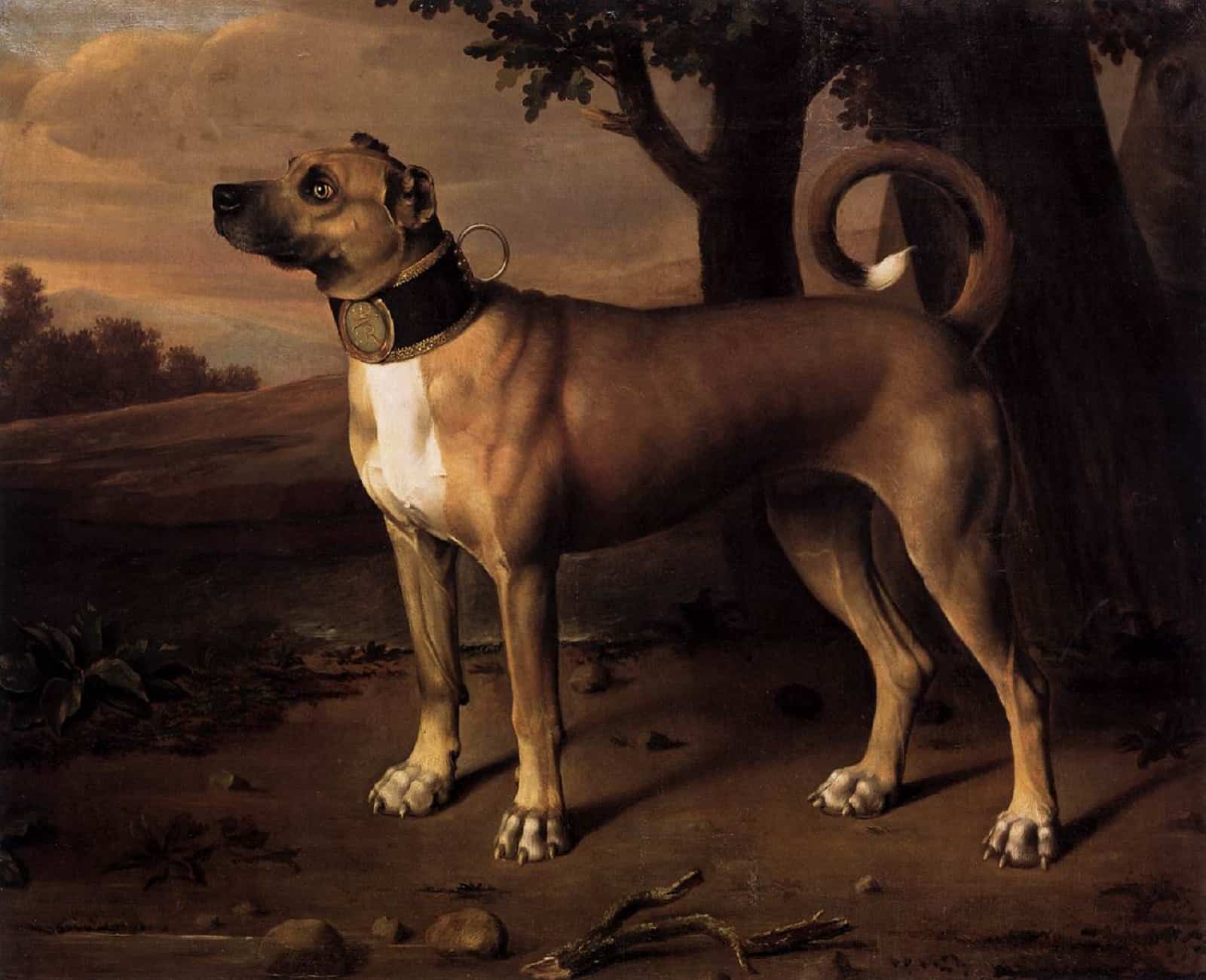
Johann Christof Merck was a specialist in animal paintings, which comes as no surprise, seeing how detailed this 1705, Ulmer Dogge oil on canvas is. The Jagdschloss Grunewald hunting lodge has a permanent exhibit of this and many other hunting paintings.
If you are wondering about the breed, well it is a Great Dane. I know it does not look a lot like what we know as the Danish giant dog, but the title of the painting is an answer that confirms this fact. I think the Mastiff x Great Dane mix looks closer to the dog from the painting.
5. Henri Van Assche’s Dog Seated On A Red Cushion
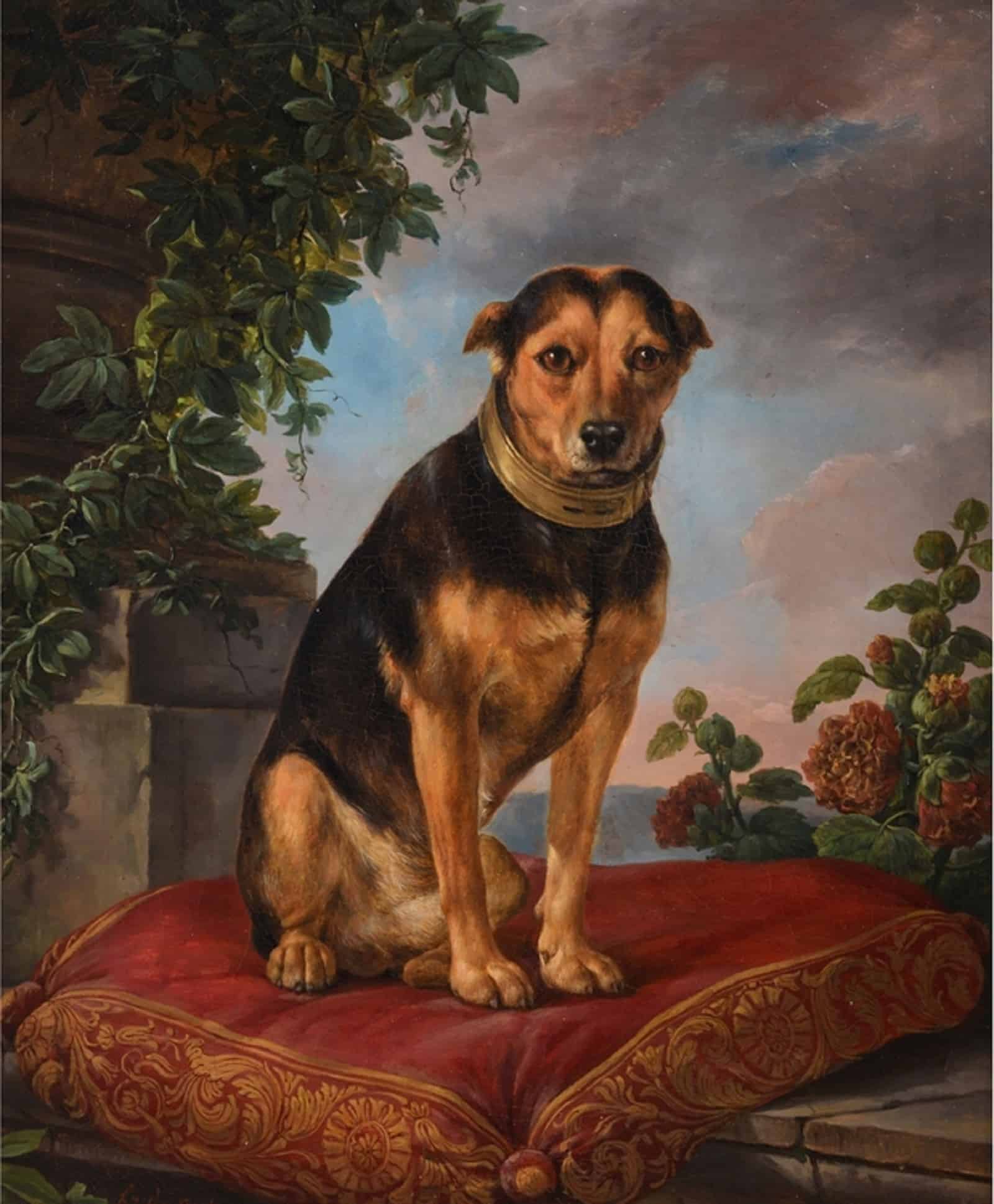
Here you can see Dobby, the Drako family House Elf sitting on a red cushion. This mixed breed dog has its ears folded back in a show of submission, while Henri Van Assche paints this owner-requested canine portrait.
Animal portraits were not common during the Rococo art period encompassing the eighteenth and nineteenth centuries. Good of Henri to grace it with a realistic dog painting. Bought by an unnamed collector in 2020, the painting is now part of their private collection.
6. Frederick August Wenderoth’s Little Terrier
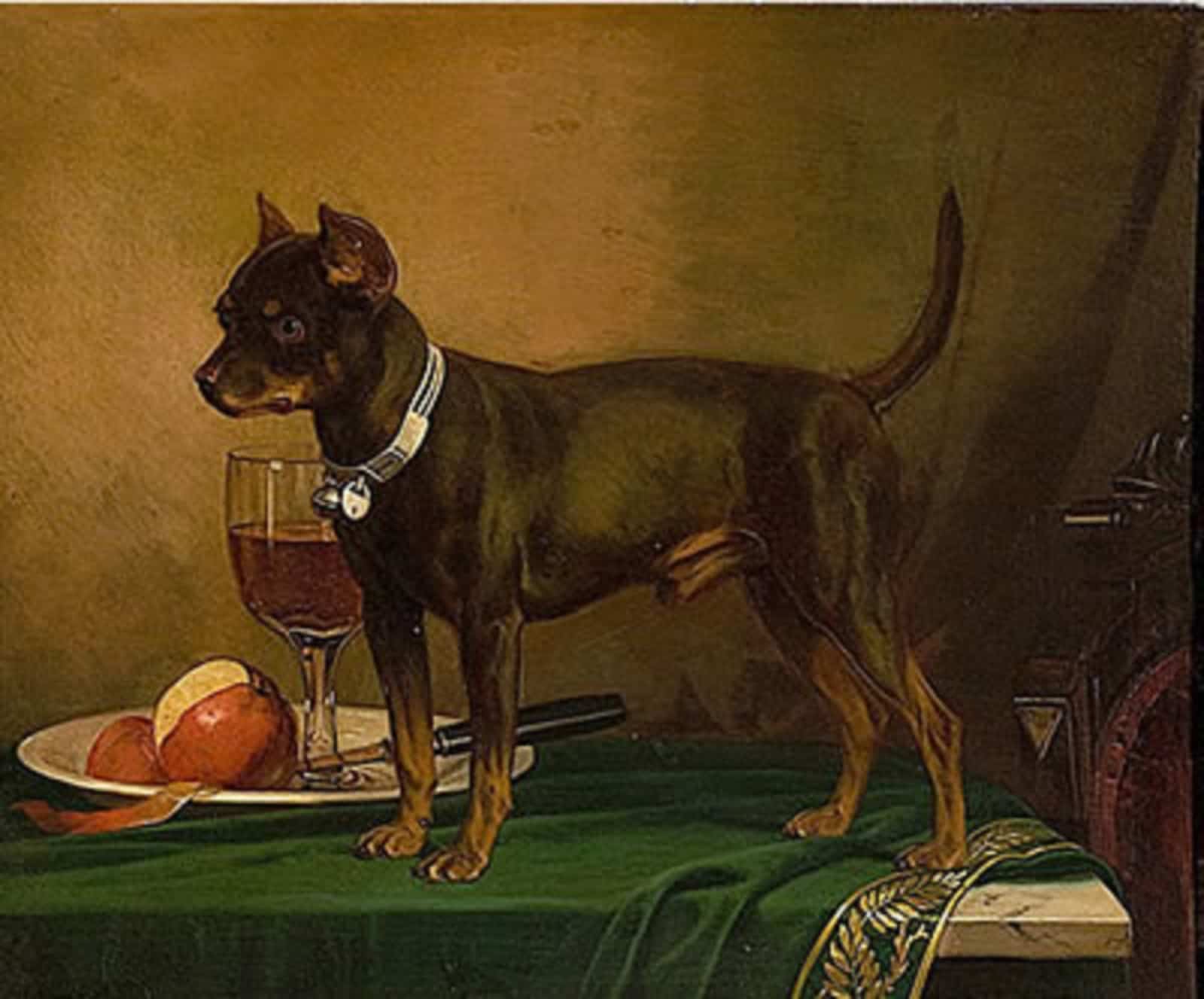
A small dog requires a small painting size. This is one is a 21 by 23 inches oil on canvas, painted by the American painter of German origin, F.A. Wenderoth. His creation of the Little Terrier seems to defy the newly embraced Romantic movement of the 19th century.
The breed is clearly well-rooted in the Miniature Pinscher genetics, but there is probably some terrier blood, judging by the title of the painting. We will most likely only ever assume because the painting was sold to an unknown buyer in 2008.
7. Francisco Goya’s The Dog
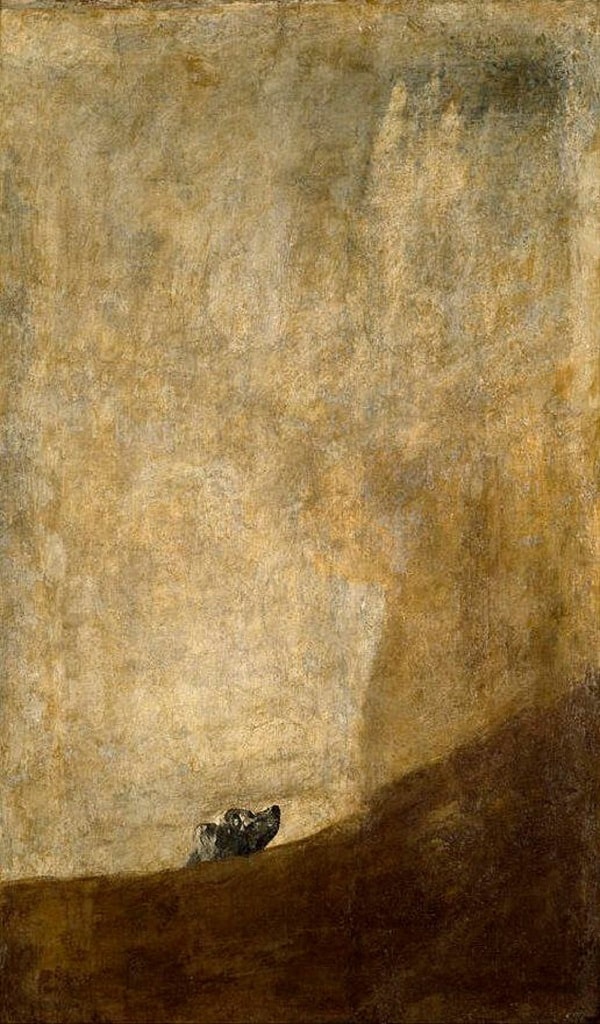
If you know anything about the art of painting, you are no stranger to Goya’s artworks. This painting is actually a mural, but has been transferred onto canvas to become part of the permanent exhibit of the Prado Museum, since 1889.
The gloomy nature of the seemingly desperate dog strikes a strong resemblance to Goya’s encapsulation of personal troubles and seclusion from the 19th century art periods.
8. Cassius Marcellus Coolidge’s A Bold Bluff
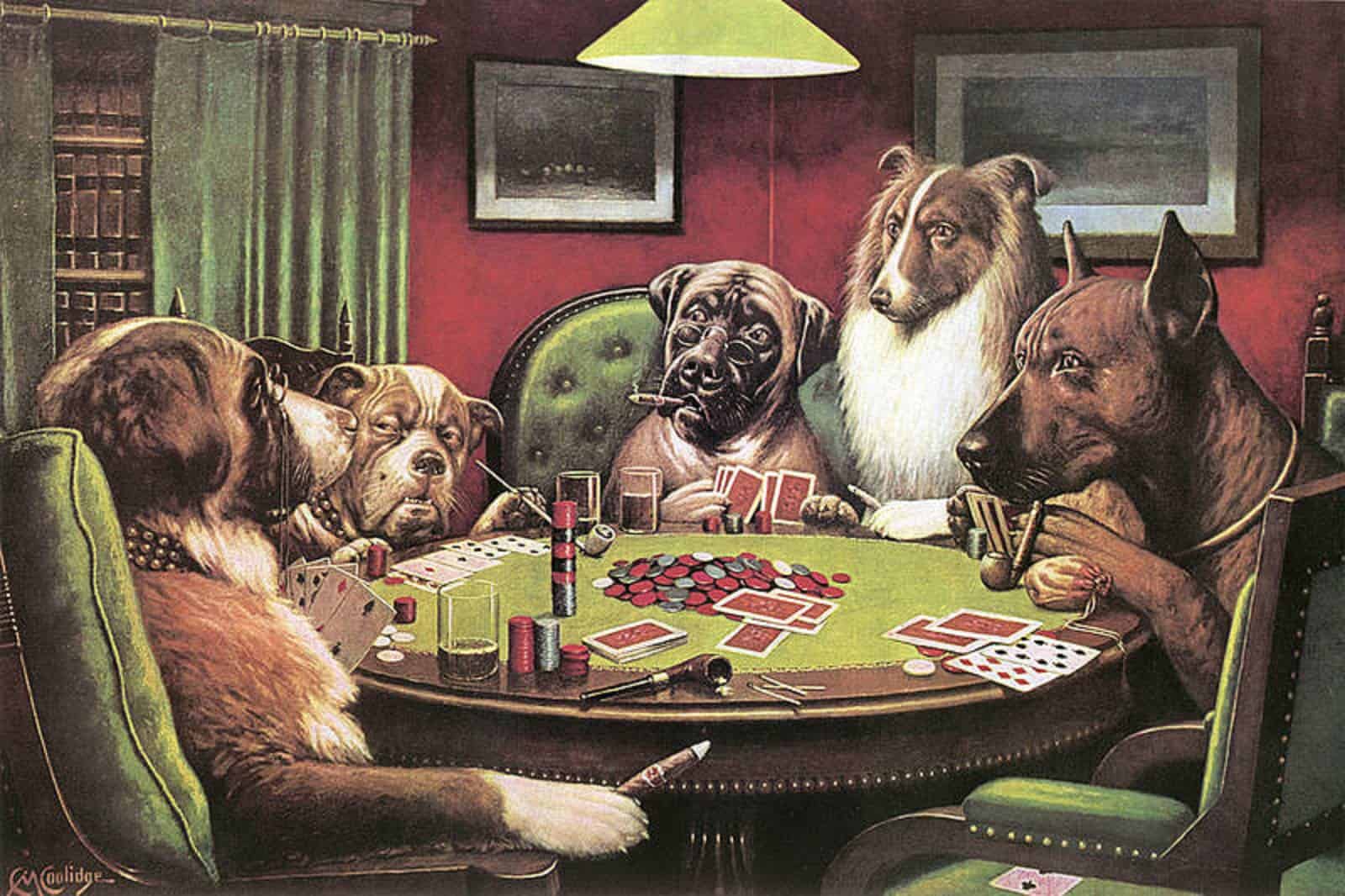
Dogs Playing Poker is as unavoidable as death on these famous dog painting listicles. Coolidge’s A Friend in Need is probably more famous, but A Bold Bluff brings us closer to the table and gives insight into the dogs’ ability to call a bluff.
This painting was sold for $590,400 and is part of a private collection of William Zeckendorf, Sr. Dogs Playing Poker is actually a commission Coolidge received from advertising firm Brown & Bigelow that enjoys great popularity even today.
9. Edwin Henry Landseer’s The Lion Dog Of Malta
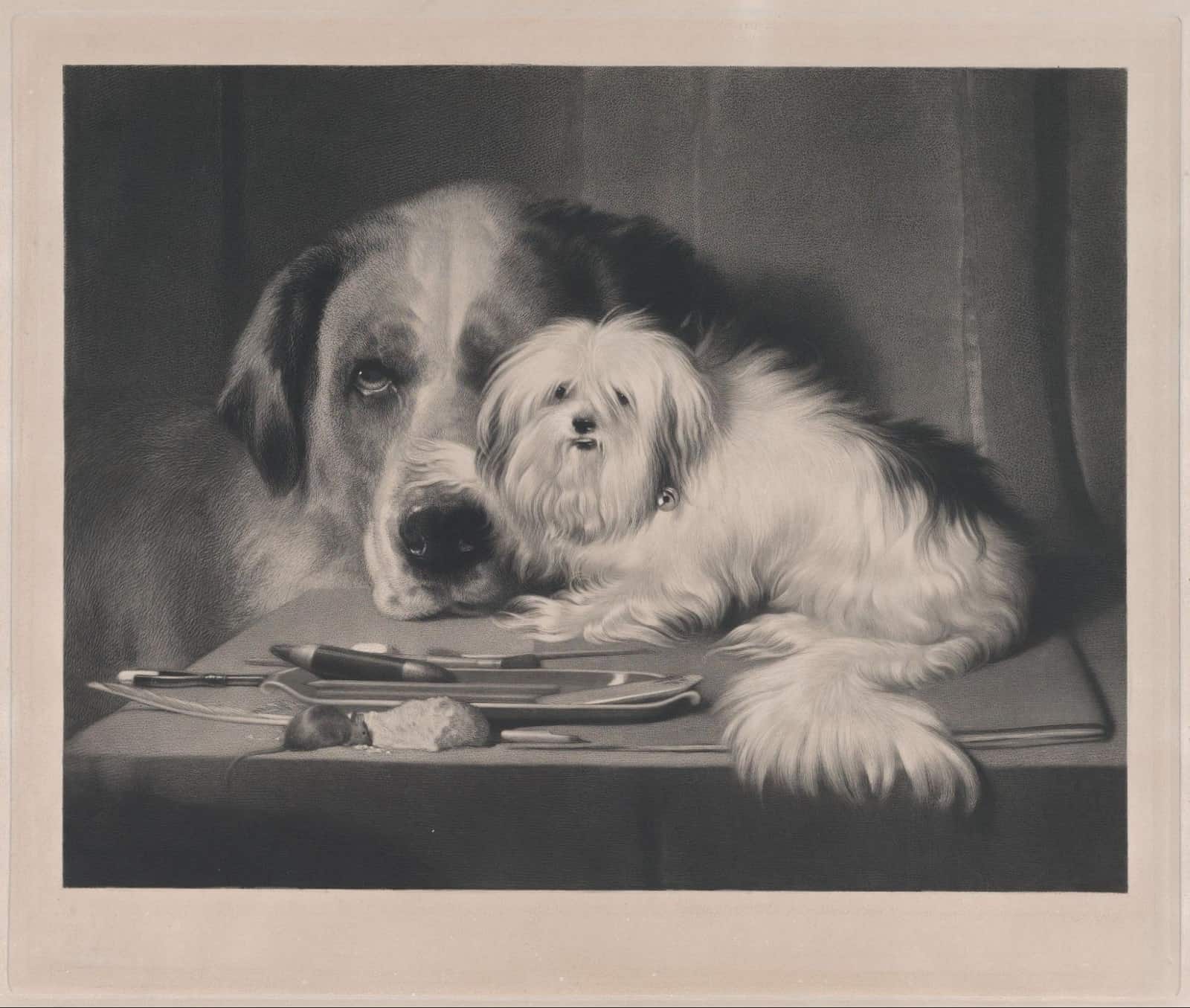
This display of the Maltese’s dominance over the more-than-significantly larger Newfoundland dog is impressive to say the least. However, Sir Edwin’s ability to capture and keep the attention of both dogs is as commendable as the canines’ stillness.
Queen Victoria, daughter of the Duchess of Kent, commissioned Landseer to paint this dogged duo as a present to her mother. The Maltese dog was her long-time companion, so the portrait’s meaning is more than superficial.
Thomas Landseer, Sir Edwin’s older brother, created a carving of this portrait to honor his brother’s exceptional painting ability. The painting has been part of the Royal Collection since 1840.
10. Paul Gauguin’s Arearea
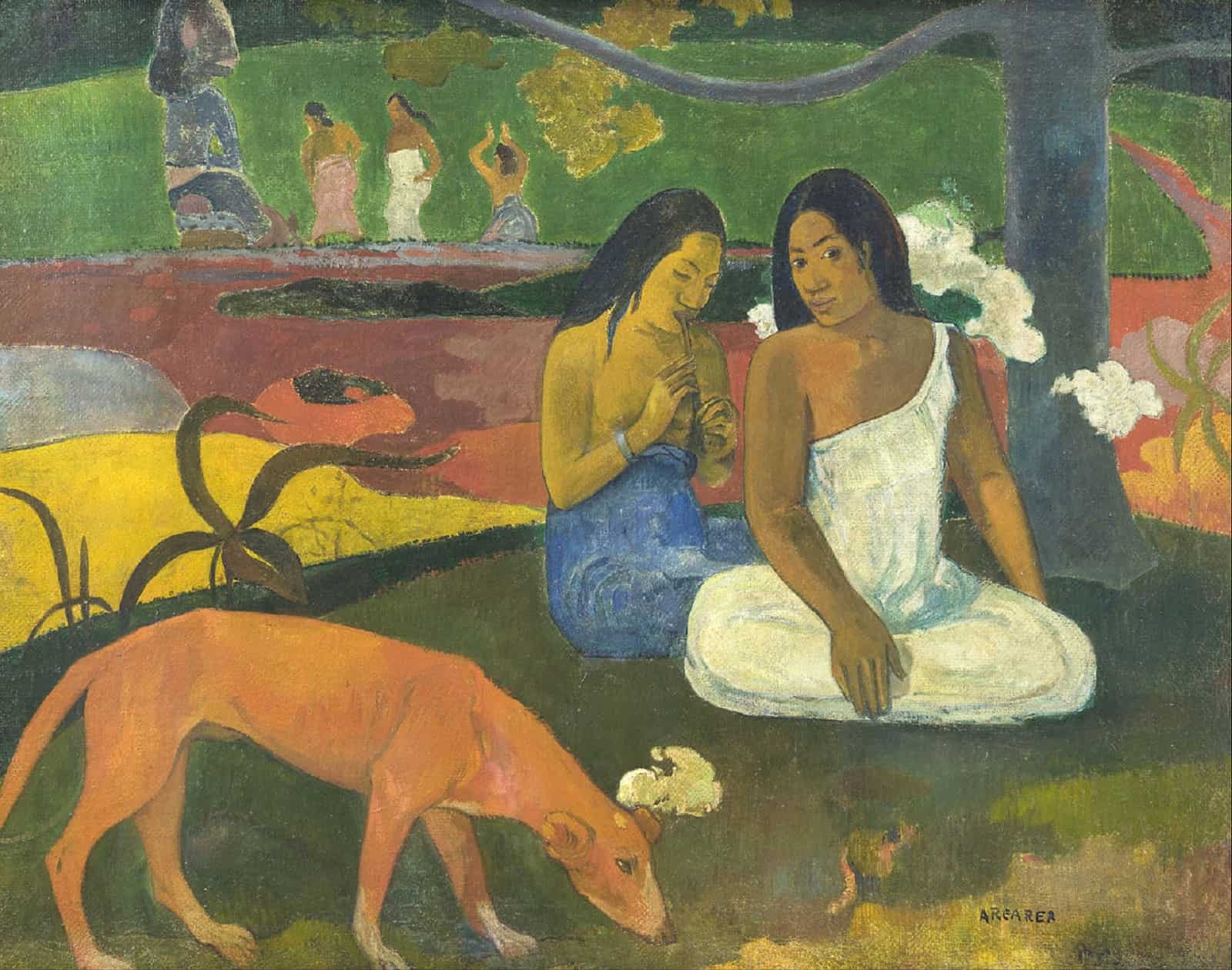
Gauguin was a French painter who seemed to have been active in the anti-political circles that fought a rather oppressive regime in the late 19th and early 20th century.
An emphasis in his dog paintings was on the “collarless” lifestyle led by the dogs he encountered in Tahiti. Although many critics call this an “exotic” motif with a strong metaphorical message, it is simply a depiction of pure truth.
Its “premiere” was in 1893 at the Parisian Durand-Ruel exhibition, but in 1961, the French State bequeathed Arearea and displayed it in the Louvre. It found its permanent home in the Musée d’Orsay in 1986, where it is still on display.
Famous Last Words
Rock art, mosaics, paintings, murals, carvings, and numerous other manifestations of art document the dog domestication process. Not only does this visual legacy show how much our relationship with dogs has changed over the years, but it also speaks of a canine’s value.
We might be taking dogs for granted, seeing how commercialized breeding has become. Still, humanity is reminded by great painters that a dog’s portrait can be as versatile as a dog itself. Whether it is a metaphor, an ode, a gift, or a graphic memoir, a dog painting speaks a thousand words.
